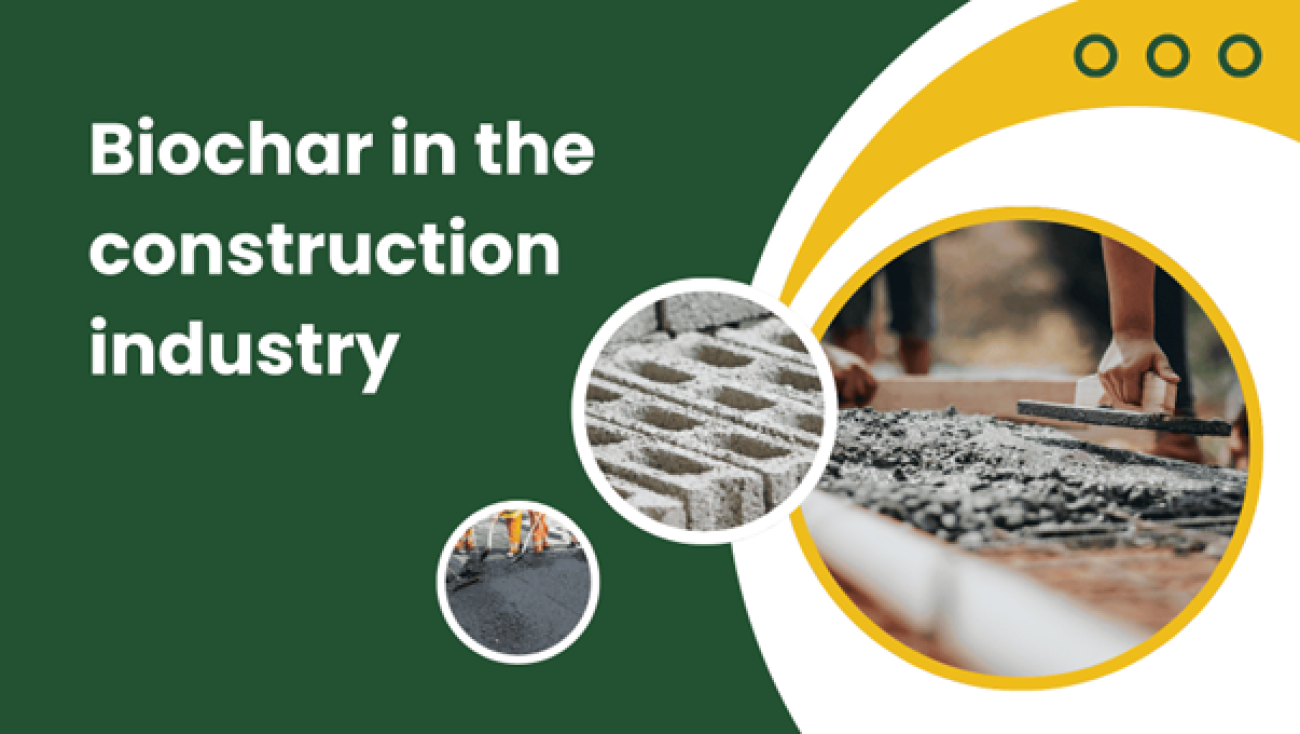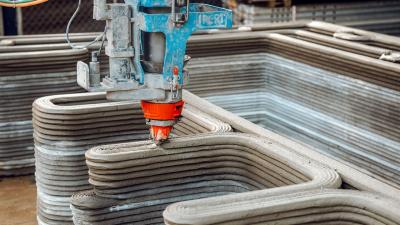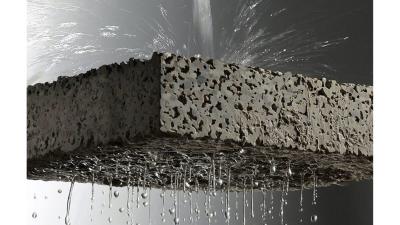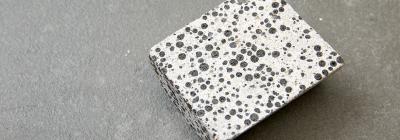

Biochar is a solid carbon material produced by biomass pyrolysis under oxygen-lacking/non-oxygen conditions. Its properties (surface area, pore structure, surface functional group, alkalinity, etc.) are strongly dependent on the pyrolysis temperature and the type of biomass, and these parameters determine the degree of "taste" with the cement binder [1], [2].


Technical perspective. Biochar beads have a pore system – large surface area: (i) water retention and slow release → internal curing to reduce premature shrinkage; (ii) play the role of "filler-nucleation" to create hydrolysis germs, thicken the ITZ region; (iii) the combination of accelerated CO₂ curing (ACC) helps capture and mineralize CO₂, and can enhance early age if optimized [1]–[3].
Life Cycle Perspective (LCA). The recent LCA framework shows that a roadmap for partial replacement of cement with biochar and copper optimized with SCMs (fly ash, slag) is feasible to reduce emissions; The benefits depend on the biochar source, energy and the manufacturing-use scenario [4].
Three common integration strategies [1], [2], [7], [8]:
Mechanism of action in cement matrix
"Safe" integration & distribution strategy


Biochar concrete Concrete Current
Biochar concrete is not an "elixir" for all grades, but it is a feasible route to reduce emissions and optimize microstructures when deployed at the right dose – right process: fine grain/pre-saturated, superplasticity compatible, ACC consideration; in parallel, prioritize CLWA/core–shell particle configuration for scale production. In order to move towards widespread application, it is necessary to standardize biochar characterization – test methods, apply feature-based design and integrate LCA into distribution decisions [1]–[8].
[1] S. Barbhuiya, B. B. Das, and F. Kanavaris, “Biocharconcrete: A comprehensive review of properties, production and sustainability,” Case Studies in Construction Materials,vol. 20,e02859,2024. [Online]. Available: https://assets.syncraft.at/2024/10/PU-Barbhuiya-2024-Biochar-Concrete.pdf
[2] G. Murali and L. S. Wong, “A comprehensive review of biocharmodified concrete: Mechanical performance and microstructural insights,” Construction and Building Materials, vol. 425, 135986, 2024. [Online]. Available: https://www.sciencedirect.com/science/article/pii/S0950061824011279?utm_source
[3] Y. Chen et al., “Accelerated carbonation curing of biocharcement mortar: Effects of biochar pyrolysis temperatures on carbon sequestration, mechanical properties and microstructure,” Construction and Building Materials, 2024. [Online].Available:https://www.sciencedirect.com/science/article/pii/S0950061824035888?utm_source
[4] “Circular economy for the building industry: Life cycle assessment of biochar in cementitious materials,” Resources, Conservation & Recycling, 2025 (online first). [Online].Available:https://www.sciencedirect.com/science/article/pii/S092134492500415X?utm_source
[5] F. Zanotto et al., “Study of the corrosion behaviour of reinforcing bars in biocharadded concrete under wet and dry exposure to calcium chloride solutions,” Construction and Building Materials, vol. 420, 135509, 2024. [Online].Available:https://www.sciencedirect.com/science/article/pii/S2352710225001950?utm_source
[6] T. Chen, Z. Yang, H. Liu, L. Li, L. Qin, and X. Gao, “Effect of biochar characteristics on freezethaw durability of biocharcement composites,” JournalofBuildingEngineering,111959,2025. [Online].Available:https://www.sciencedirect.com/science/article/pii/S2352710225001950?utm_source
[7] M. Wyrzykowski, N. Toropovs, F. Winnefeld, and P. Lura, “Coldbonded biocharrich lightweight aggregates for netzero concrete,” Journal of Cleaner Production,vol. 434,140008,2023. [Online].Available:https://www.sciencedirect.com/science/article/pii/S0959652623041665?utm_source
[8] S. Zou, M. L. Sham, J. Xiao, L. M. Leung, J.X. Lu, and C. S. Poon, “Biocharenabled carbonnegative aggregate designed by coreshell structure: A novel biochar utilising method in concrete,” Construction and Building Materials,138507,2024.Online].Available: https://www.sciencedirect.com/science/article/pii/S0950061824036493?utm_source

New Material 02/03/2025
3D concrete printing technology is becoming a prominent trend in modern construction. It is widely applied not only in civil engineering projects but also in transportation, offering numerous benefits such as labor cost savings, reduced construction costs, and the ability to create unique architectural designs. This article will explore this technology, the 3D concrete printing process, and how it is applied in residential construction.

New Material 07/02/2025
Pervious concrete is a type of concrete that's porous and allows water to pass through. It's often used in driveways and other flatwork applications

New Material 22/01/2025
Prestressed concrete has revolutionized modern construction by enhancing the structural performance of concrete members. This guide delves into the concept, methods, and advantages of prestressed concrete, providing essential technical details.

New Material 06/01/2025
As the global construction industry continues to grow, there is an urgent need for sustainable materials that minimize environmental impact. Ordinary Portland Cement (OPC), the primary component of traditional concrete, significantly contributes to carbon emissions, accounting for 6–7% of global CO2 emissions annually. With a projected 200% increase in OPC demand by 2050, the industry faces mounting pressure to adopt greener alternatives. Enter nanomaterials-based self-healing concrete—a groundbreaking solution designed to enhance durability, reduce maintenance costs, and align with sustainability goals.

New Material 16/12/2024
Trúc Chỉ is a creative type of handcrafted paper from Vietnam that combines traditional papermaking techniques with modern artistic innovations. This paper is not only functional but also holds high aesthetic and cultural value. So, what is Trúc Chỉ, and where does it originate? Let’s explore this unique art form in detail below.